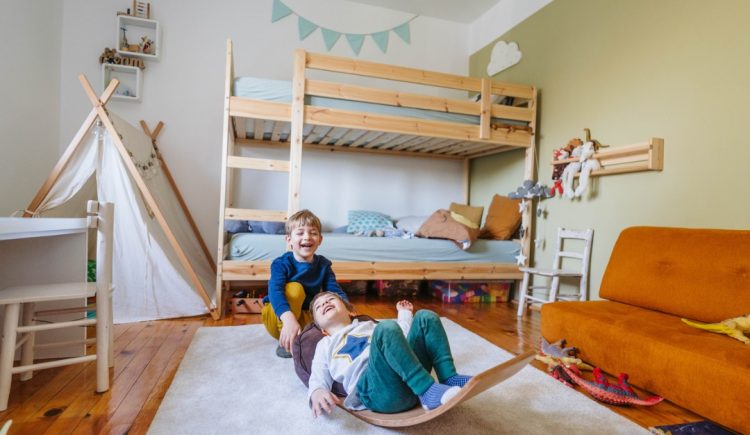Children’s rooms can present a decorating challenge unlike any other. Kids’ rooms are often used as play spaces, sleeping areas, homework zones and more. Few other spaces in your home need to be as versatile or require as much functional storage. Additionally, kids love when their room features engaging and vibrant spaces, so decorating rules can be very different and your approach may require some extra creativity. These clever tips can help you design the perfect kids’ room.
Prioritize Storage
At some point, kids reach an age where they need to be responsible for helping to ensure the tidiness of their space. Kids should be empowered with organization and storage space to ensure that the task isn’t overwhelming or impossible. It’s unfair to tell a child to clean their room if there is nowhere to put anything. Prioritize storage to ensure that all toys, books and games have an easily accessible space. Loft beds with dressers, cube shelving, closet organizers and other creative solutions should be explored to assess what fits properly and store those treasured belongings.
Encourage Minimalism Early
The core requirement of a kid’s room is that it can change functionality. Creating a room that can serve as a play space and a study area, requires a bit of a blank slate. Too many toys, books and games can do a kids’ room a disservice by creating a cramped and unusable space. Embracing minimalism early on can ensure that your child isn’t shocked when you suddenly realize that you need to donate half of the toys piling up in the room.
Encourage kids to follow the one-in-one-out rule and donate to children in need regularly. You can also ensure a functional kids’ room by encouraging relatives and friends to gift experiences rather than items that will just pile up. After all, too many toys can make it nearly impossible to use the space to study or sleep and even makes it difficult to play. Remember that minimalism doesn’t have to mean a boring space, just an unencumbered one.
Embrace Accent Pieces
Many people are stumped when designing a kids’ room because they need to grow with the child. A living space or kitchen can easily follow trends and still not need drastic changes for a few years at a time, a toddler’s nursery needs are very different than a young child’s. Instead of decorating with large themes that will go out of style as soon as your child reaches their next birthday, choose accent pieces to feature their favorites. Character pillows, art and throw blankets are much easier to shift than repainting a mural on the wall or themed rugs. Invest in adult-friendly staples and decorate with whimsy accents to ensure that your space can grow with your child.











